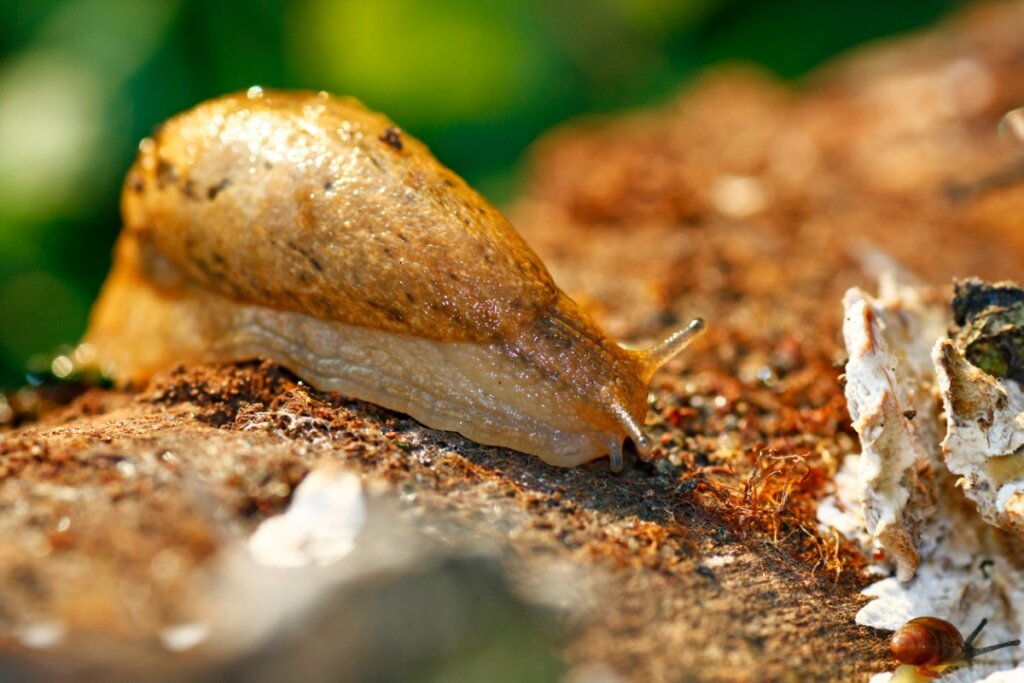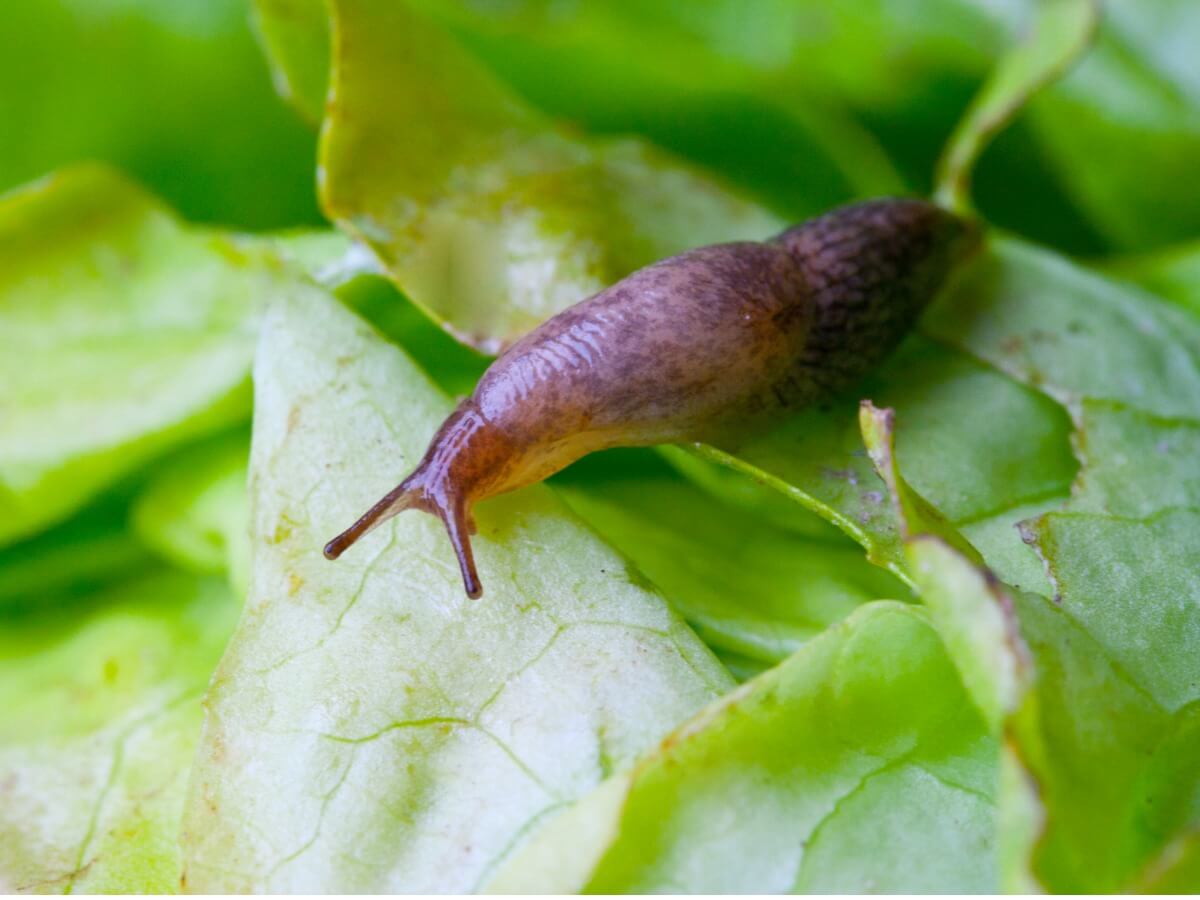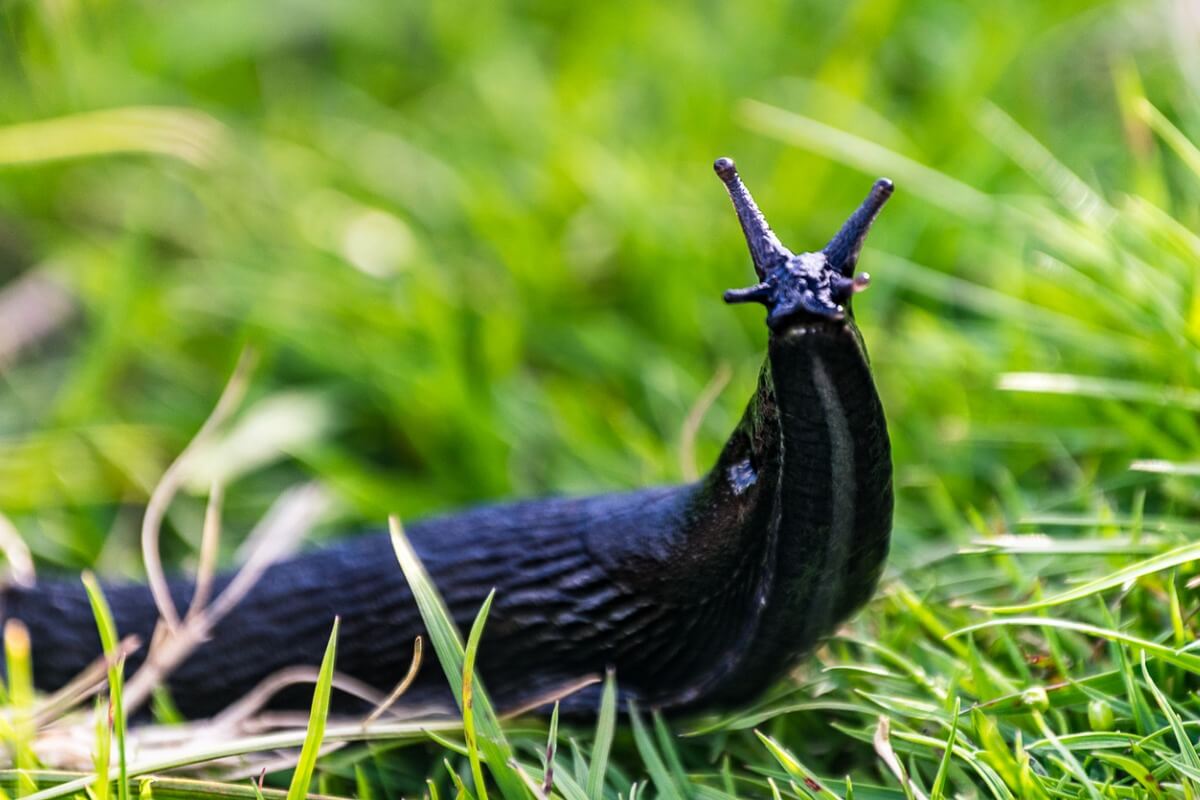10 Curiosities About Slugs

The most famous gastropod mollusks in general society are surely snails. They’re popular with humans because of their cute “horns”, their curious shells, and their leisurely gait. However, their closest relatives, the slugs, are not at all popular and many people tend to find them repulsive. Keep reading to discover 10 curiosities about slugs that will fascinate you.
Slugs are both terrestrial and marine invertebrates that have adapted to many different lifestyles, with all the bodily and physiological modifications that this entails. If you want to know more about them, we encourage you to read these 10 curiosities about slugs!
1. The term “slug” encompasses many species
When we talk about slugs we usually think of a brown, slimy creature with an orange line around its body edges. Although this perfectly describes one of the most common species in Europe (Arion vulgaris), it should be noted that there are many more.
The term “slug” encompasses hundreds of species in the biological orders Onchidiacea, Soleolifera, and Sigmurethra. The latter order also includes the land snails we know, all of which are gastropod mollusks (of which there are 80,000 species in total around the world).
Slugs and land snails are very close relatives.
2. A common body shape
Slugs seem simple at first glance, as they don’t have an external shell to protect them (unlike snails). However, their anatomy holds many secrets that are worth knowing about. In the following list, we’ll show you the common body plan of these invertebrates:
- Feelers: Like other gastropods, slugs have feelers (ocular and sensory). Both are retractable.
- Mantle: Behind the head of this gastropod is the mantle, a kind of hump that covers part of its back. This is where we find the pneumostome, which is in charge of breathing.
- Tail: The section of the slug behind the mantle.
- Foot: This is the lower ventral part of the slug. This “foot” allows movement thanks to a series of muscular contractions and the secretion of mucus.

3. Some have a “shell”
Most slugs have a remnant of their shell, which is much more visible in their relatives, the snails. This organ is internal and is used for the storage of calcium salts, although it’s true that some of these invertebrates lack it completely. The adult specimens of the family Philomycidae are an example of this.
Many slugs have an internalized shell that serves as mineral storage. This is a vestigial feature that has acquired a new function.
4. Slugs depend on humidity
Another of the curiosities about slugs is their need to find viable environments for their survival. Since these invertebrates lack shells, they’re vulnerable to desiccation and die within a short time in extremely dry environments.
To avoid this scenario, slugs generate a layer of protective mucus around their body that keeps them somewhat insulated. In addition, they take advantage of rainy nights to go out and feed, times when the humidity is higher.
5. Slugs are producers of two types of mucus
Slugs are able to synthesize two types of mucus material: watery and dense. Both are hygroscopic, i.e. they attract moisture from the immediate environment by absorption processes. The aqueous mucus expands to the sides of the invertebrate, while the dense mucus is released from the back to the front (and covers the entire body of the animal).
Thanks to their mucus production, slugs are able to move and protect themselves.
6. A diverse trophic ecology
Most slugs are generalist animals, i.e. they feed on almost any kind of organic matter they find in their environment. Some of their favorites are petunias, chrysanthemums, daffodils, begonias, and many others. Because of this, they’re considered garden pests and agricultural pests in equal measure.
These invertebrates also eat fruit, vegetables, and even fungi and molds. Nor do they waste decomposing organic matter of animal origin (certain species are predators of other small creatures).
7. They’re part of the food base of many animals
Although they aren’t pleasing to the eye of many people, slugs are part of the menu of all sorts of vertebrates. Among the animals that prey on them are reptiles, amphibians, mammals, birds and even fish. Certain species (such as the snake Thamnophis elegans) have specialized in preying on slugs, although they also consume other small creatures.
The Duberria lutrix snake feeds exclusively on slugs and snails.
8. A primary (but effective) method of defense
Another of the curiosities about slugs lies in their rudimentary method of defense. When they perceive danger, these invertebrates contract their own bodies, becoming much thicker and more compact. In addition, they cling firmly to the substrate with their feet. With this postural change, it’s much more difficult to pull them out of the ground and swallow them.
9. Slugs are hermaphrodites
Slugs are hermaphrodites, so they have both male and female sexual organs. Interestingly, cases of apophallation have been detected in some species, in which one of the reproductive components bites and tears off its own male sexual organ to separate from its partner if the latter gets stuck in its female cavity.
Although they lose their male structure in the process, these slugs can still reproduce with their female sex organs.

10. Some slugs are pests, but others aren’t
Most slugs are harmless to humans and their interests, but a few species are very serious pests in agriculture and horticulture. When they feed on crops, they kill their leaves and stems before the vegetables can grow.
Although elimination of these beautiful invertebrates should never be the first option, sometimes it’s necessary to get rid of pests before they create serious economic damage. Slugs are fascinating creatures, but some can also ruin an agricultural crop in a matter of weeks.
All cited sources were thoroughly reviewed by our team to ensure their quality, reliability, currency, and validity. The bibliography of this article was considered reliable and of academic or scientific accuracy.
- Los gasterópodos pulmonados, capítulo 18. Recogido a 27 de septiembre en https://www.usc.gal/export9/sites/webinstitucional/gl/investigacion/grupos/malaterra/publicaciones/capitulos/040_Los_gasterxpodos_pulmonados.pdf
- Thamnophis elegans, ADW. Recogido a 27 de septiembre en https://animaldiversity.org/accounts/Thamnophis_elegans/
